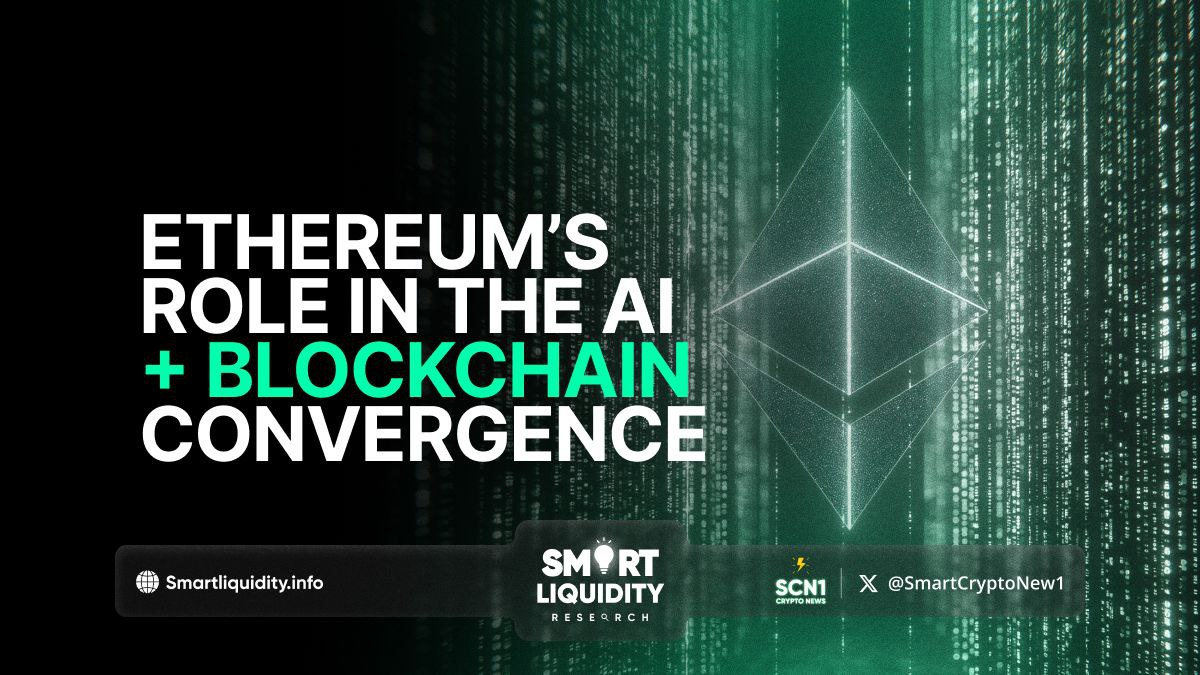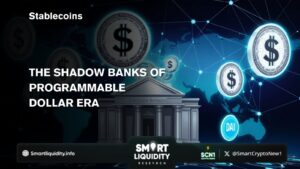Ethereum’s Role in the AI + Blockchain Convergence


Ethereum’s Role in the AI + Blockchain Convergence! The merging of two technological frontrunners—Artificial Intelligence (AI) and blockchain—is gaining traction globally. Ethereum, the leading smart contract platform, is at the heart of this convergence. Its capabilities in trust, decentralization, and automation offer immense potential to reshape digital infrastructure.
Why Ethereum & AI Are a Natural Match
1. Trust & Transparency for AI:
Ethereum’s immutable ledger and smart contracts offer transparency into AI models—tracking data provenance, training procedures, and model updates. This reduces the opacity of “black box” AI systems, promoting accountability. Research highlights how verifiable smart contracts can record AI training data and decision logic, thereby enhancing trustworthiness
2. Secure and Fair Data Practices:
With individuals controlling their data, Ethereum enables decentralized marketplaces where data owners can license AI training datasets securely via smart contracts. This not only safeguards privacy but also opens new monetization avenues
3. Decentralized AI Compute Networks:
Projects like Bittensor and Gensyn distribute machine learning tasks across independent nodes. Ethereum–compatible systems can verify completion of tasks using cryptographic proofs like “proof-of-gradient,” ensuring fairness and trust.
4. Decentralized Governance & Compliance:
Governance models like DAOs on Ethereum can oversee AI model deployment, updates, or deprecation. Transparent voting oracles ensure community-driven decisions around dynamic AI systems.
Ethereum’s Momentum in AI & Blockchain Fusion
- Decentralized AI Ecosystems Gaining Traction:
Experts see AI agents being integrated into blockchains, enabling autonomous interactions and richer user experiences. Christian Thompson of Sui Foundation noted that the merging of AI, AR/VR, robotics, and blockchain could herald watershed moments in technology - Massive Market Potential & Efficiency Gains:
Analysts forecast a $1.4 trillion market by 2030, growing at a ~90% CAGR. AI-driven optimization of blockchain—through adaptive consensus or performance tuning—is projected to boost throughput on networks like Ethereum tenfold by 2025. - Ethical AI Advocacy from Within Ethereum:
Former core developer Eric Connor emphasized Ethereum’s value in promoting transparent, accountable AI systems—countering centralized, opaque AI platforms. - Vitalik Buterin’s Vision:
At BUIDL ASIA 2024, Ethereum co-founder Vitalik Buterin advocated using AI to improve blockchain code quality—proposing AI-assisted audits to minimize bugs and vulnerabilities in the EVM.
Real-World Tools & Innovations
- Smart Contracts as Marketplaces for AI Models:
Academic studies—such as those on trustless machine learning contracts—demonstrate how Ethereum can facilitate reward-based AI model training in a trustless environment, enabling anyone to contribute and monetize AI expertise. - Data Marketplaces & On-Chain Provenance:
Platforms like Ocean Protocol and Fetch.ai empower data providers to share encrypted datasets while retaining control—payments and access managed via Ethereum smart contracts. On-chain governance ensures model provenance and ethical use - Innovative AI-Enabled Ethereum Projects:
º Autonomous AI Agents like Luna (virtual influencers), AIXBT (crypto insights), and Botto (community-driven AI art) are operational on Ethereum
º Secure AI on EVM Chains: Projects like SightAI explore fully homomorphic encryption integrated with Ethereum–compatible chains to process AI tasks securely without exposing raw data
Challenges Ahead
While the Ethereum-AI synergy is compelling, there are significant hurdles:
| Challenge | Explanation |
|---|---|
| Scalability & Throughput | Ethereum averages 15–30 transactions/sec—not enough for AI’s heavy data flows or real-time inference. Layer 2 and scalability upgrades remain essential. |
| Compute Intensity | AI workloads are resource-heavy. Coupling with blockchain adds latency and performance demands. |
| Complex Integration | Teams need dual expertise in AI and blockchain. Development tools and infrastructure are still nascent. |
| Regulatory Uncertainty | Both AI and crypto face evolving legal landscapes, which may stifle adoption. |
| Adoption Barriers | Enterprises require clear value propositions to adopt such hybrid solutions. |
Concluding Thoughts
Ethereum is uniquely positioned to drive the fusion of AI and blockchain by:
- Ensuring transparency, data sovereignty, and fair governance,
- Fueling decentralized AI computation, on-chain marketplaces, and ethical oversight,
- Powering innovative applications like autonomous agents, AI marketplaces, and secure ML inference.
But for this synergy to reach its full potential, the community must overcome scalability constraints, bridge technical divides, and navigate regulatory uncertainties.
In the coming years, as upgrades like Ethereum’s “Pectra” rollout and Layer-2 expansion unfold, we might witness the emergence of truly decentralized, trusted, and intelligent ecosystems—ushering in a new era of digital autonomy.




